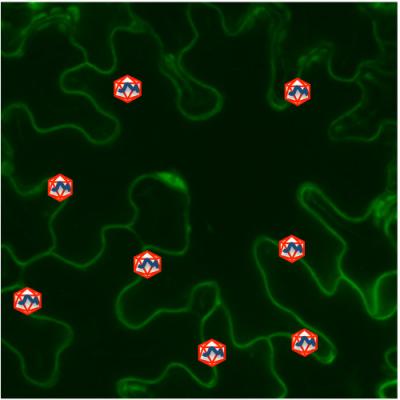A team of University of Kentucky researchers, led by plant pathologists Pradeep and Aardra Kachroo, has discovered an important component in plants’ ability to resist bacterial and viral pathogens.
 DRB4 relocates to the cell's cytoplasm when a virus is present. Photo courtesy of Shifeng Zhu |
The Kachroos, who are husband and wife, study the RNA silencing pathway in plants as a means of controlling bacterial and viral disease pathogens. While this pathway was first discovered in plants, it exists in all sorts of organisms.
Through this silencing pathway, a plant can trigger one of two types of resistance to fend off disease. In the basal type of resistance, the plant will recognize the pathogen’s RNA and destroy it. In the other, R proteins in the plant recognize certain pathogens and destroy them before they gain a foothold.
“For many years, these two forms of resistance were thought to have some sort of connection, but no one knew what that connection was,” Pradeep said.
Shifeng Zhu, Rae-Dong Jeong and Gah-Hyun Lim, all researchers in the Kachroos’ labs, found that the component DRB4 plays a critical role in both forms of resistance, but has a different role in each.
“If plants contain the R protein then they do not need to activate basal resistance,” Pradeep said. “This process is much more robust in controlling the pathogen than basal resistance.”
It would be ideal for all plants to use R proteins to control pathogens, but not all plants have them.
“So, if we can recognize the steps subsequent to activating resistance and understand how they work, then we can target these individual steps to activate resistance when it is most essential,” Pradeep said. “That would be easy enough to do in any plant since those subsequent components are usually present in all plants irrespective of whether or not they contain the R protein.”
Gaining a better understanding of the necessary components to disease resistance in plants could help in the development of resistant varieties that could help farmers and home gardeners better manage diseases.
The study was funded by the National Science Foundation’s Division Integrative Organismal Systems and recently published in Cell Reports.
Related Pages:






Post a comment
Report Abusive Comment